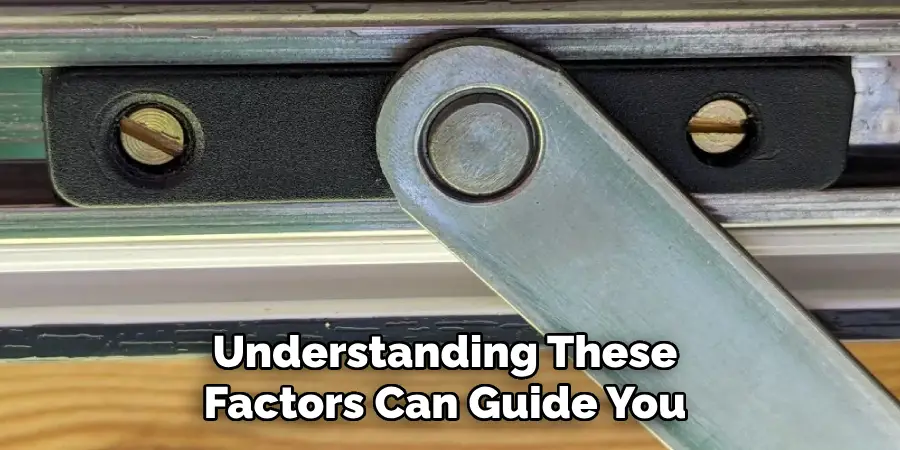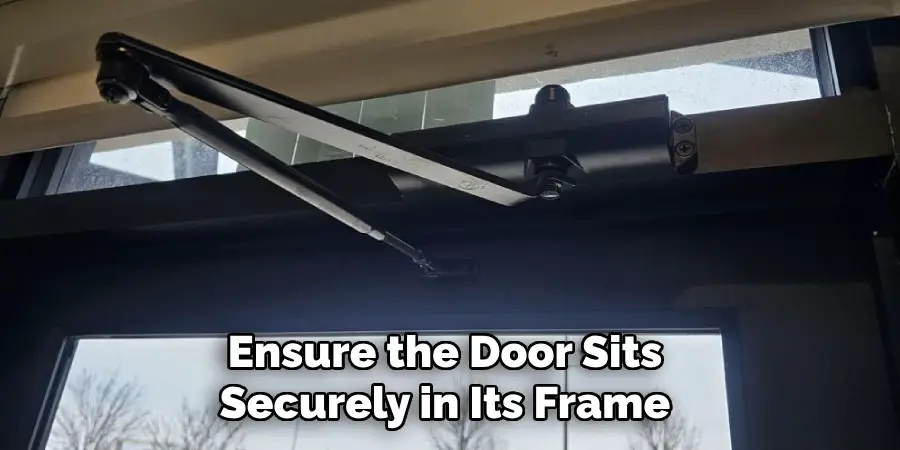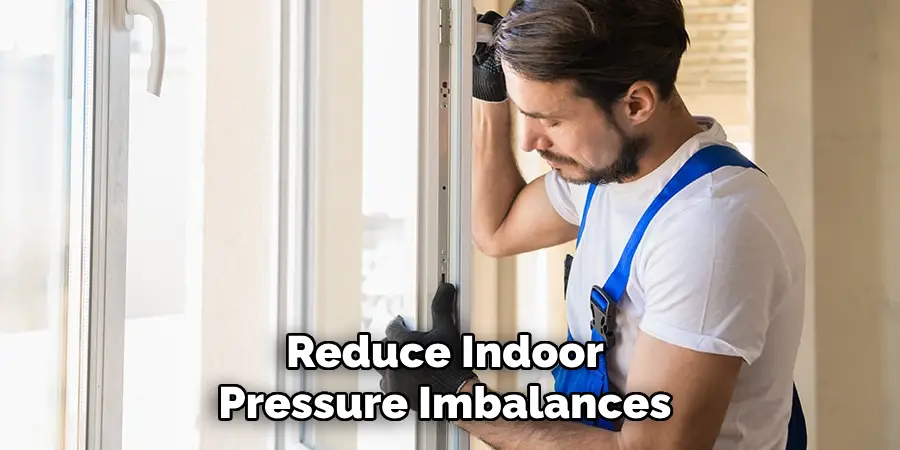Wind-blowing doors can be a frequent and frustrating issue, especially in areas prone to strong gusts or drafts. Whether it’s your front door, patio door, or interior door, dealing with the problem effectively requires understanding the underlying causes and applying practical solutions. In this guide, we will discuss why doors tend to blow open due to wind and explore a variety of methods to prevent this from happening. These solutions range from simple, quick fixes to more permanent installations, helping you to keep your home secure and comfortable.

By following these steps, you can ensure your doors remain closed, reducing drafts, increasing security, and eliminating the inconvenience of wind-blown doors. Learning how to keep wind from blowing door open is essential for maintaining a peaceful and efficient living environment, free from unexpected gusts disrupting your space.
Understanding the Causes of Doors Blowing Open
Understanding why doors blow open begins with examining the causes.
Air Pressure Differences: Strong winds often blow doors open due to differences in air pressure between the inside and outside of a house. When wind creates higher pressure outside, it pushes the door inward. In some cases, opening windows or other doors can create an indoor pressure imbalance, causing drafts to force doors open.
Loose Door Latches: A common cause of doors blowing open is a loose or faulty latch that doesn’t properly catch when the door is closed. This leaves the door susceptible to being pushed open by a gust of wind.
Gaps and Misalignment: If a door doesn’t fit properly within its frame, gaps can form, allowing wind to push through. Even a small gap around the doorframe can give wind the leverage needed to blow the door open.

Lightweight or Poorly Balanced Doors: Lightweight doors or doors that aren’t properly balanced are more likely to swing open in the wind. Heavier doors are more resistant to being blown open, but stronger gusts can even affect them. Understanding these factors can guide you in implementing effective solutions to keep your doors securely closed.
How to Keep Wind from Blowing Door Open: Simple Solutions to Keep Doors Closed
Step 1: Install a Door Stop or Wedge
One of the simplest solutions is to use a doorstop or wedge. These can be placed at the bottom of the door to hold it in place, preventing it from being pushed open by the wind. Rubber or heavy-duty door stops work well for both interior and exterior doors. For added convenience, you can attach a door stop to the wall or floor to prevent losing it when not in use.
Step 2: Use a Door Chain
A door chain provides an extra layer of security and prevents the door from swinging open fully. This is particularly helpful for front or back doors. Install the chain at the top of the door so it can catch the door when it’s partially opened, allowing you to control how far the door opens.
Step 3: Add Velcro Strips
Adding adhesive Velcro strips to the door and frame for lightweight interior doors can create a firm grip that holds the door in place. While this solution is not permanent, it’s a quick fix for keeping doors closed in moderate wind conditions.
Step 4: Adjust Door Hinges
Tighten loose door hinges to ensure the door sits securely in its frame. Loose hinges can cause doors to swing open more easily. If the door is poorly balanced or the hinges are misaligned, the door may not latch properly, allowing the wind to push it open. Adjust the hinge position to realign the door so it closes securely if necessary.

Step 5: Use a Door Catch or Magnetic Latch
A door catch or magnetic latch can be installed to hold the door firmly closed when not in use. Magnetic door latches are great for both interior and exterior doors, as they provide a strong hold but are easy to disengage when you need to open the door.
How to Keep Wind from Blowing Door Open: Permanent Solutions for Wind-Proofing Doors
Step 1: Install a Door Closer
A door closer is a mechanical device that automatically closes a door after it has been opened. These devices are commonly used on commercial doors but can also be installed on residential doors to prevent them from being blown open. Door closers come in different types, including surface-mounted or concealed options. They ensure the door closes firmly every time, preventing wind from pushing it open. Installation involves attaching the closer to the top of the door and the frame and adjusting the tension as needed. This is a reliable method to maintain secure closure against windy conditions.
Step 2: Install a Storm Door
A storm door acts as a protective barrier, reducing the impact of wind on your main door. It provides an extra layer of insulation and security, shielding the main door from harsh weather conditions. In addition to preventing wind from blowing the door open, a storm door can also reduce energy costs by acting as a buffer against drafts. Storm doors are typically made with durable materials that can withstand varying weather conditions, offering long-term resilience and enhancing your home’s protection while maintaining aesthetic appeal.
Step 3: Upgrade to Heavier Doors
Lightweight doors are more prone to being blown open by the wind. If possible, upgrading to a heavier, solid-core door will reduce the likelihood of the wind affecting it. Heavier doors are also more durable and offer better insulation, making them a worthwhile investment for both interior and exterior doors. When choosing a new door, consider materials like solid wood or metal, which offer added weight and strength. This improvement not only enhances stability but also adds to the overall security of your home.

Step 4: Install Weatherstripping
Weatherstripping seals gaps around the door to improve energy efficiency and prevents wind from entering through cracks and forcing the door open. Install weatherstripping along the edges of the door frame to create a tight seal. This reduces air leakage, preventing wind from building pressure behind the door. Choose materials such as foam, rubber, or silicone for durability and effectiveness. Regular maintenance of weatherstripping will ensure continued protection against the elements and maintain your home’s energy efficiency.
Step 5: Fit a Deadbolt or Secure Locking System
If the door’s latch isn’t strong enough to keep the door closed, installing a deadbolt or another secure locking mechanism can provide extra strength to resist strong winds. Deadbolts and multi-point locking systems engage at several points along the door, making it difficult for wind to force the door open. Upgrade existing locks to ones that can withstand pressure and ensure they are installed correctly for optimal effectiveness. Investing in a robust locking system is both a preventive measure against wind and a security enhancement for your home.
Securing Patio or Sliding Doors from Wind
Step 1: Install a Patio Door Lock or Latch
Sliding patio doors can be particularly susceptible to wind. Installing a specialized lock or latch will keep the door closed even when exposed to gusts. These locks can be installed on the inside of the sliding door frame and engage when the door is closed, preventing it from being easily pushed open by wind. Choose a lock that is compatible with your door’s design and offers strong resistance to outdoor elements for long-term durability and effectiveness.
Step 2: Use a Door Brace
A door brace is a device that sits on the floor and braces the door, holding it in place and preventing it from sliding open. A brace fitting into the sliding track can be effective for patio doors. Adjustable door braces are widely available and easy to install, offering a sturdy solution for shutting doors. When selecting a door brace, ensure it is made from robust materials designed to withstand pressure from high winds, providing you peace of mind during stormy weather.
Step 3: Add Weight to the Bottom of the Door
For lightweight patio doors, adding weight to the bottom of the door can help resist the wind. Attach a weighted strip or use a draft stopper to create a heavier base for the door, making it less likely to blow open. This method increases stability and improves energy efficiency by reducing drafts. Weighted solutions can be easily adjusted or removed, providing flexibility and convenience without compromising on functionality.

Step 4: Secure Sliding Doors with a Rod
A common method to secure sliding doors from wind is to place a metal or wooden rod in the track when the door is closed. This prevents the door from sliding open, even if the wind pushes against it. The rod should fit snugly in the track and be removed easily when you want to open the door. Selecting a rod that’s of the correct length and material ensures optimal security and can be a cost-effective and quick solution to reinforcing your door against the elements.
Preventing Future Wind-Related Issues
Regular Maintenance
Regularly check the condition of your door’s hinges, latches, and weatherstripping. Tighten any loose screws and replace worn-out components as needed to ensure the door closes securely. Routine maintenance will help identify potential weaknesses before they become serious issues, ensuring your doors’ longevity and improved functionality.
Check for Gaps and Seals
Inspect the door and frame for gaps or misalignment. Replacing old or worn weatherstripping will improve insulation and reduce drafts that can lead to wind blowing the door open. Ensure that all seals are tight to prevent air and moisture infiltration, thereby maintaining a stable indoor environment and enhancing the overall effectiveness of your door against windy conditions.
Control Airflow Indoors

Reduce indoor pressure imbalances by keeping windows and other doors closed when it’s windy outside. Opening multiple doors or windows at once can create strong air currents inside the house, contributing to wind pushing doors open. By managing airflow within your home, you can minimize the impact of external weather conditions and maintain a comfortable and safe living space.
Conclusion
Wind-blowing doors open can be frustrating, but with the right combination of simple fixes and permanent solutions, you can prevent it from happening again. By implementing measures such as installing door closers or upgrading to heavier doors, you can tackle the problem effectively. Furthermore, securing patio doors, adjusting hinges, and controlling indoor airflow play significant roles in maintaining a comfortable and safe environment.
Regular maintenance and attention to weatherstripping, locks, and air pressure imbalances are crucial steps on how to keep wind from blowing door open. These strategies ensure that your doors remain firmly shut and functional, no matter the wind conditions outside. With options available to suit various situations and budgets, you can confidently protect your home from becoming vulnerable to wind-related disturbances.

